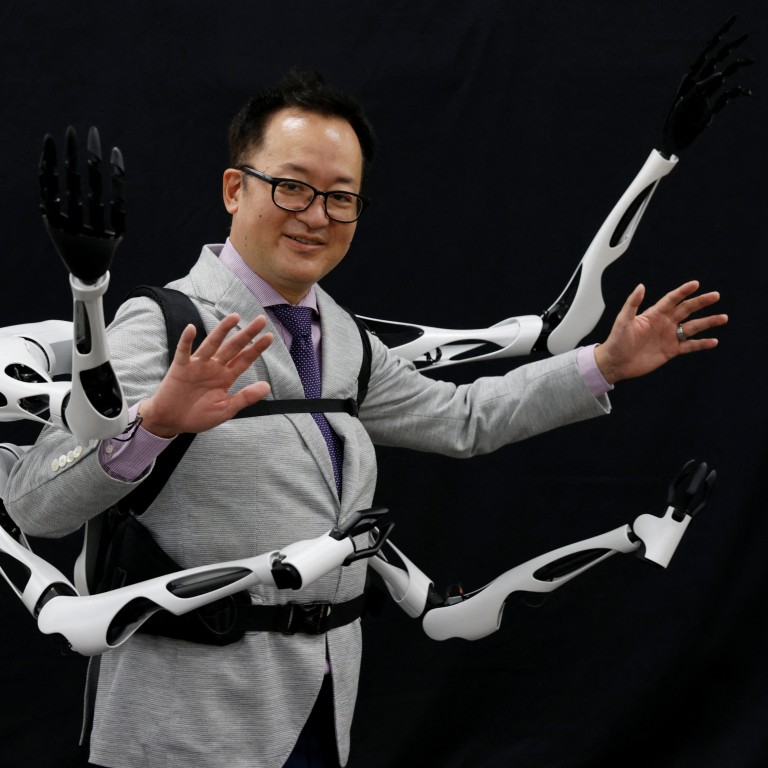
Japan researchers develop wearable robot arms to ‘help us do as we please’: ‘taking them off feels a little sad’
- A team of scientists at the University of Tokyo has developed the ‘Jizai Arms’, named after a Japanese term that denotes autonomy and personal freedom
- ‘In the future we might see wings growing out of people’s backs, or drones attached to people’, said the leader of the team behind the breakthrough
What would society look like if cyborg body parts were freely available for use like roadside rental bicycles? Masahiko Inami’s team at the University of Tokyo have sought to find out by creating wearable robotic arms.
The aim is to foster something like the relationship between musician and instrument, “lying somewhere between a human and a tool, like how a musical instrument can become as if a part of your body.”
Inami says he was inspired by traditional Japanese puppetry and a quasi-horror short story by novelist Yasunari Kawabata about a man who borrows a young woman’s arm and proceeds to spend the night with it.
“This is absolutely not a rival to human beings, but rather something that helps us do as we please, like a bicycle or e-bike. It supports us and can unlock creativity,” Inami said.
A promotional video for the “Jizai Arms” shows two ballet dancers performing a routine with robotic arms protruding from their backs and torsos – human and machine moving in concert. The dancers ultimately embrace, cyborg arms included.
They’re trapped in dead-end jobs and never want kids – meet Japan’s millennials
Some wearers grow attached to the arms after some time, Inami said. “Taking them off after using them for a while feels a little sad. That’s where they’re a little different to other tools,” he said.
But the potential goes beyond turning a novelist’s fantasy into reality, such as helping in search-and-rescue missions, he added.
“In the future we might see wings growing out of people’s backs, or drones attached to people … Maybe someone will come up with a sport that requires six arms or invent a new type of swimming,” Inami said.

